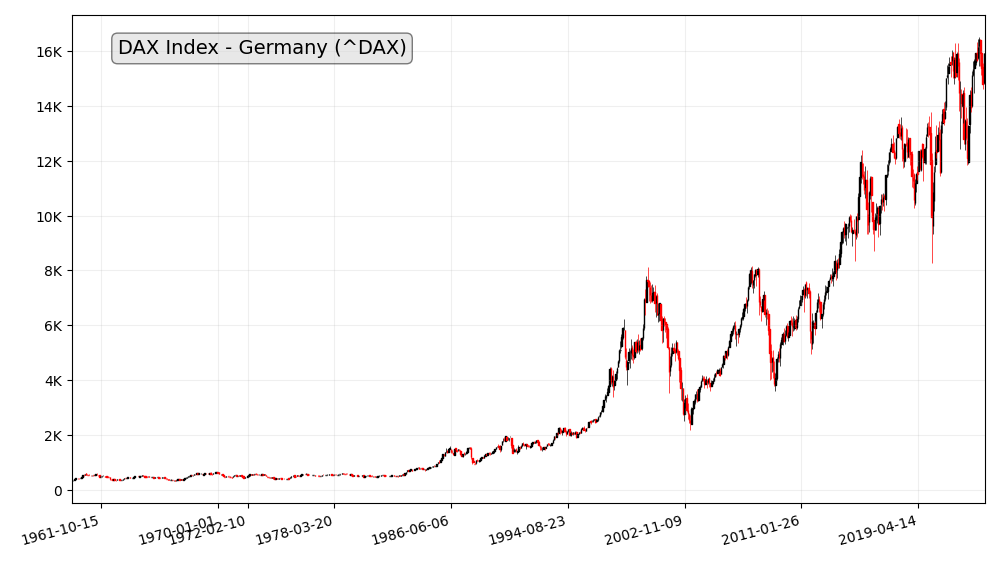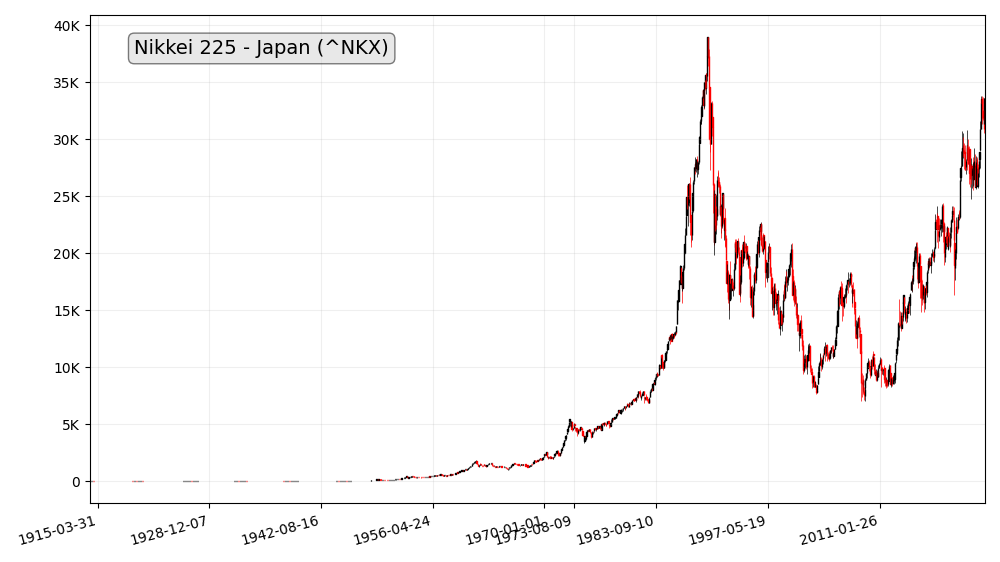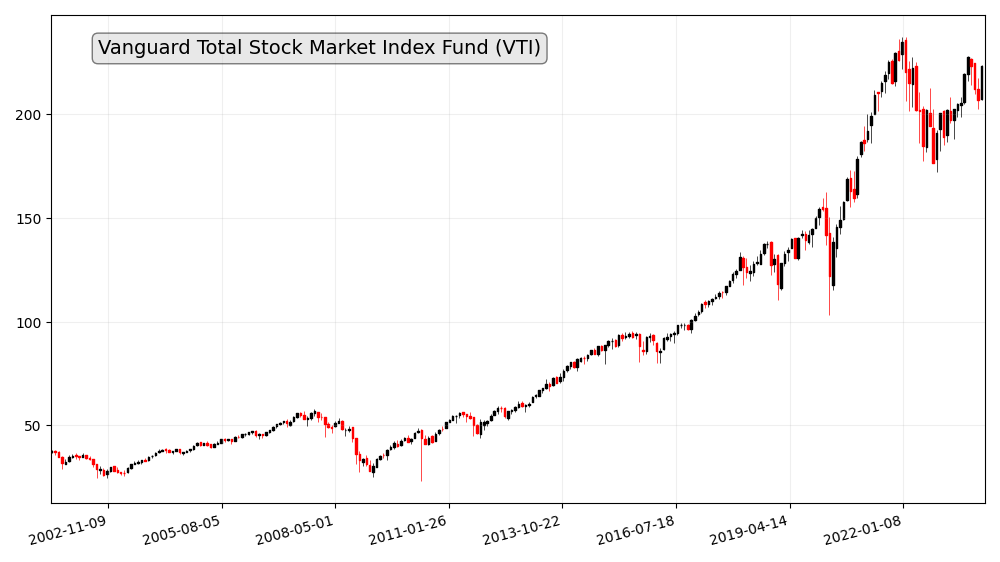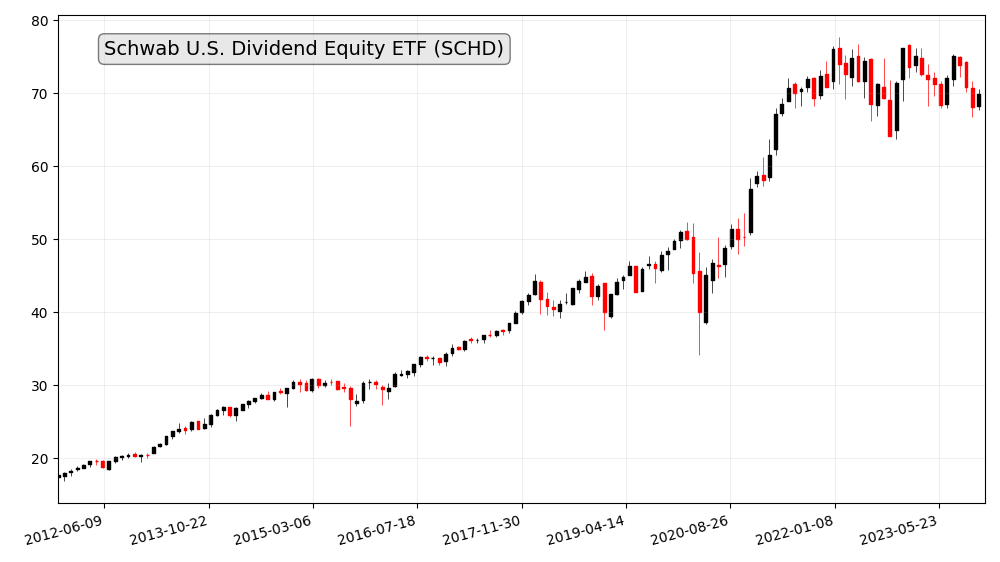Ever thought about diving into the world of real estate investments? Traditionally, investing in real estate meant buying physical properties, but there’s a whole other world out there: the stock market. Yes, you can invest in real estate without dealing with tenants or fixing leaky roofs. Intrigued? Let’s explore how.
Real Estate Investments in the Stock Market
Why Invest in Real Estate?
Tangible vs. Intangible Investments
Real estate has always been a favorite for investors due to its tangible nature. There’s something reassuring about owning a physical asset. You can touch it, see it, and even live in it. This tangibility provides a sense of security, making real estate a classic investment choice. But what if you could enjoy the benefits of real estate without the hassle of managing properties? This is where the stock market steps in, offering a more flexible and often more lucrative way to invest in real estate.
Tangible investments, like owning a house or commercial property, offer control and the potential for personal use. However, they require significant capital and ongoing maintenance. Intangible investments, such as stocks or REITs, provide ownership in real estate without the physical management. This can be an appealing option for those looking for passive investment opportunities.
Long-Term Wealth Building
Real estate is renowned for long-term wealth building. Properties tend to appreciate over time, providing a steady increase in value. Whether through rental income or property value appreciation, real estate can be a solid pillar in your investment portfolio. Historical data shows that real estate investments have consistently outpaced inflation, preserving and growing wealth across generations. Additionally, real estate often provides tax benefits, such as deductions for mortgage interest and property depreciation, which can enhance overall returns.
For instance, investing in a rental property can generate steady monthly income, while the property’s value appreciates over the years. This dual benefit of income and capital appreciation makes real estate a powerful tool for building long-term wealth. Moreover, the leverage obtained through mortgages can amplify returns, allowing investors to control more property with less capital.
The Concept of Real Estate Investment Trusts (REITs)
What Are REITs?
Enter Real Estate Investment Trusts, or REITs. These are companies that own, operate, or finance income-producing real estate. They pool capital from multiple investors, allowing individuals to earn dividends from real estate investments without having to buy, manage, or finance any properties themselves. REITs offer a way to invest in large-scale, income-producing real estate, providing a similar experience to investing in stocks.
REITs were created in the 1960s to give all investors the opportunity to invest in income-producing real estate, similar to how mutual funds offer a way to invest in stocks. By purchasing shares of a REIT, investors can gain exposure to a diversified portfolio of properties and benefit from professional management.
Types of REITs
There are different types of REITs, each serving a unique investment purpose:
Equity REITs: These invest in and own properties. They generate income mainly through leasing space and collecting rents. Equity REITs typically own commercial properties such as office buildings, shopping malls, and apartment complexes. They focus on generating rental income and property appreciation.
Mortgage REITs: These deal with the financing side, investing in real estate mortgages and earning income from interest. Mortgage REITs provide financing for income-producing real estate by purchasing or originating mortgages and mortgage-backed securities. They are more focused on the credit markets and interest rates.
Hybrid REITs: A combination of both equity and mortgage REITs, these diversify across property ownership and real estate financing. Hybrid REITs offer a balanced approach, providing exposure to both property income and mortgage interest.
How REITs Work
REITs function much like mutual funds. Investors buy shares, and the REITs use that capital to purchase, develop, and manage properties. The profits, primarily from rental income, are then distributed as dividends to the shareholders. This structure provides a way for individuals to invest in real estate with the liquidity of trading stocks.
REITs are required to distribute at least 90% of their taxable income to shareholders annually, which allows them to avoid paying corporate taxes. This high payout ratio ensures that investors receive a steady stream of income. REITs are listed on major stock exchanges, making them easy to buy and sell, providing investors with the flexibility and liquidity often lacking in direct real estate investments.
Benefits of Investing in REITs
Diversification
One of the most significant advantages of REITs is diversification. Instead of putting all your eggs in one basket (or one property), you spread your investment across a variety of real estate assets. This helps mitigate risks associated with owning a single property. Diversification across different property types and geographical locations can also protect against market volatility and economic downturns in specific regions or sectors.
For example, a diversified REIT might own a mix of office buildings, retail centers, apartment complexes, and industrial properties across various cities or countries. This spread reduces the impact of any single market downturn on the overall investment.
Regular Income
REITs are required to distribute at least 90% of their taxable income to shareholders annually. This ensures a steady stream of income, which can be particularly attractive to income-focused investors. The dividends paid by REITs are often higher than those from other types of stocks, providing a reliable income source.
This income can be particularly beneficial for retirees or those seeking passive income streams. Additionally, the income from REITs can provide a buffer during periods of stock market volatility, offering a more stable return compared to other investments.
Liquidity
Unlike direct real estate investments, REITs are traded on major stock exchanges. This means you can buy or sell shares quickly, offering a level of liquidity that traditional real estate lacks. Liquidity is crucial for investors who may need to access their funds quickly without waiting for a property to sell.
This liquidity allows investors to adjust their portfolios quickly in response to market conditions or personal financial needs. It also enables investors to enter and exit the real estate market without the lengthy and complex process of buying and selling physical properties.
REITs vs. Direct Real Estate Investment
Pros and Cons of REITs
REITs offer many benefits, but they’re not without drawbacks. They provide easy access to real estate investments and offer high liquidity and regular dividends. However, they can be subject to market volatility and management fees. Additionally, the performance of REITs can be influenced by broader market conditions and interest rate fluctuations.
Investing in REITs involves less direct control over property management and investment decisions, which might be a downside for hands-on investors. Furthermore, while REIT dividends are attractive, they are typically taxed as ordinary income, which can be less favorable than the tax treatment of qualified dividends or long-term capital gains.
Pros and Cons of Direct Real Estate
Direct real estate investing can offer higher control and potential tax benefits. You can directly influence property value through improvements and management. On the downside, it requires significant capital, time, and effort, not to mention the risks associated with property management. Direct ownership also lacks liquidity, making it harder to sell properties quickly if needed.
Investing directly in real estate provides opportunities for active involvement, such as choosing tenants, setting rental rates, and making property improvements. This hands-on approach can lead to higher returns but also involves more risk and effort. Direct real estate investors can benefit from tax deductions for depreciation, mortgage interest, and other property-related expenses, which can significantly enhance after-tax returns.
How to Get Started with REITs
Choosing the Right REIT
Selecting the right REIT is crucial. Consider your investment goals and risk tolerance. Look for REITs with strong track records, experienced management teams, and portfolios aligned with your investment objectives.
When evaluating REITs, consider factors such as the types of properties they own, their geographic focus, and their historical performance. Research the management team’s experience and their strategy for growth and risk management. It’s also important to consider the REIT’s dividend yield and payout ratio, as well as their financial health and leverage levels.
Equity REITs
If you’re looking for income and potential capital appreciation, equity REITs might be a good fit. They own and operate income-generating real estate, offering exposure to property value increases and rental income. Equity REITs are often diversified across various property types, including residential, commercial, and industrial properties.
For example, an equity REIT focused on residential properties might own apartment buildings or single-family rental homes. These investments can provide stable rental income and the potential for property value appreciation over time. Additionally, equity REITs often reinvest a portion of their earnings into property improvements and acquisitions, which can drive future growth.
Mortgage REITs
For those seeking higher dividend yields and are comfortable with interest rate risk, mortgage REITs could be appealing. They invest in mortgages and mortgage-backed securities, earning income from the interest on these investments. Mortgage REITs can be more sensitive to interest rate changes, which can impact their performance.
Mortgage REITs typically invest in residential and commercial mortgage loans or mortgage-backed securities. They earn income from the interest payments on these loans, which can result in higher dividend yields compared to equity REITs. However, mortgage REITs are more exposed to interest rate fluctuations, which can affect their borrowing costs and the value of their mortgage investments.
Hybrid REITs
Hybrid REITs provide a blend of both worlds, offering diversified exposure to both property ownership and mortgage investments. They can offer balanced returns and reduced risk compared to pure equity or mortgage REITs.
By investing in both physical properties and mortgage loans, hybrid REITs can benefit from rental income and interest income. This diversification can help stabilize returns and reduce the impact of market fluctuations on any single type of real estate investment. Hybrid REITs can be an attractive option for investors looking for a balanced approach to real estate investing.
Evaluating REIT Performance
Key Metrics to Consider
When evaluating REITs, focus on metrics like Funds From Operations (FFO), which measures cash generated by the REIT’s operations. FFO is an important indicator of a REIT’s performance because it excludes non-cash expenses such as depreciation, providing a clearer picture of its cash flow. Additionally, look at the dividend yield, which indicates the income you can expect relative to the share price.
Another critical metric is the Net Asset Value (NAV), which assesses the market value of a REIT’s assets minus its liabilities. Comparing a REIT’s stock price to its NAV can help you determine if it’s undervalued or overvalued. The Debt-to-Equity ratio is also essential, as it indicates the financial stability of the REIT and its ability to manage debt.
Market Trends
Stay informed about market trends. Economic conditions, interest rates, and real estate market trends can significantly impact REIT performance. For example, rising interest rates can increase borrowing costs for REITs, affecting profitability. Conversely, economic growth can boost demand for commercial properties, enhancing rental income and property values.
Keeping an eye on sector-specific trends is also crucial. For instance, the retail sector may be affected by e-commerce growth, while the office sector might be influenced by remote work trends. Understanding these trends can help you make more informed investment decisions.
The Role of REITs in a Balanced Portfolio

Risk Management
Including REITs in your portfolio can enhance risk management. They often perform differently than stocks and bonds, providing a hedge against market volatility. By adding REITs, you can achieve a more balanced and diversified portfolio, reducing overall investment risk.
For example, during periods of stock market volatility, REITs may provide more stable returns due to their focus on income-generating real estate. This stability can help smooth out the overall performance of your portfolio and reduce the impact of market swings.
Growth Potential
REITs offer growth potential through property value appreciation and rental income. With proper selection, they can be a robust component of a diversified investment strategy. Over the long term, REITs have shown the potential to deliver attractive total returns, combining income and capital growth.
Investing in REITs allows you to benefit from the growth of the real estate market without the complexities of direct property ownership. As real estate values increase and rental rates rise, the value of REIT shares and their dividend payouts can grow, providing a solid return on investment.
Tax Implications of Investing in REITs
Understanding Tax Benefits
REITs come with tax benefits. They don’t pay corporate income taxes if they comply with certain requirements, such as distributing 90% of their income to shareholders. This pass-through structure allows investors to receive dividends that are typically taxed at their individual income tax rates.
This structure can be advantageous, as it avoids the double taxation that occurs with traditional corporations. However, the dividends received from REITs are generally taxed as ordinary income, which may be at a higher rate than qualified dividends or long-term capital gains.
Tax-Deferred Accounts and REITs
Consider holding REITs in tax-deferred accounts like IRAs to maximize tax efficiency. This can defer taxes on dividends and capital gains, allowing your investment to grow unhindered. By holding REITs in retirement accounts, you can benefit from compound growth without the immediate tax burden on income distributions.
This strategy can be particularly effective for investors in higher tax brackets, as it allows for the deferral of taxes on REIT income until retirement, when they may be in a lower tax bracket. Additionally, reinvesting dividends within a tax-deferred account can accelerate the growth of your investment over time.
Common Myths About REITs
REITs Are Only for Income Investors
While REITs are known for providing steady income, they also offer capital appreciation potential. They can be suitable for a variety of investment goals, not just for income-focused investors. Growth-oriented investors can benefit from the capital gains generated by property value appreciation and reinvested earnings.
For example, some REITs focus on properties with high growth potential, such as those in emerging markets or rapidly developing areas. These REITs may offer lower initial dividends but higher potential for capital appreciation, appealing to investors seeking long-term growth.
REITs Are Too Risky
Like all investments, REITs carry risks, but they’re not inherently riskier than other stocks. Their risk depends on the type of properties they own, their management, and market conditions. Diversified REITs with strong management and stable property portfolios can offer a balanced risk-reward profile.
It’s important to conduct thorough research and due diligence when investing in REITs. Understanding the specific risks associated with different types of REITs and their underlying properties can help you make informed investment decisions and manage risk effectively.
Future Trends in Real Estate Investments
Technological Advancements
Technology is reshaping real estate investing. From AI-driven property management to blockchain for transparent transactions, tech is making real estate investments more efficient and accessible. Innovations like smart buildings, virtual tours, and online platforms for property transactions are revolutionizing the industry.
For example, AI can optimize property management by predicting maintenance needs and reducing operational costs. Blockchain technology can provide secure and transparent property transactions, reducing fraud and increasing investor confidence. These advancements can enhance the overall efficiency and profitability of real estate investments.
Global Market Expansion
Globalization is opening new opportunities for real estate investments. International REITs allow investors to diversify geographically, tapping into markets with high growth potential. Investing in global REITs can provide exposure to emerging markets and economies with robust real estate sectors.
Global REITs can offer access to diverse property markets and economic conditions, spreading risk and enhancing return potential. For instance, investing in REITs focused on rapidly growing cities in Asia or Latin America can provide significant growth opportunities, driven by urbanization and economic development.
The Impact of ESG Investing
Environmental, Social, and Governance (ESG) factors are becoming increasingly important in real estate investing. Investors are looking for REITs that adhere to sustainable practices, contribute positively to society, and maintain high governance standards. ESG investing not only aligns with ethical values but can also enhance long-term returns by focusing on sustainable and socially responsible properties.
REITs that prioritize energy efficiency, waste reduction, and sustainable development practices can attract socially conscious investors and tenants, leading to higher occupancy rates and rental income. Additionally, strong governance practices can reduce risks and improve management performance, benefiting investors in the long run.
Conclusion
Summarizing the Key Points
Real estate investments in the stock market, primarily through REITs, offer a unique way to gain exposure to real estate without the headaches of property management. They provide diversification, regular income, and liquidity, making them an attractive option for many investors.
Understanding the different types of REITs, evaluating their performance, and staying informed about market trends are crucial steps for successful real estate investing in the stock market. By incorporating REITs into a balanced portfolio, investors can achieve a mix of income, growth, and risk management.
Final Thoughts
Investing in REITs can be a smart move for those looking to diversify their portfolios and secure regular income. By understanding how REITs work and staying informed about market trends, you can make informed investment decisions. Ready to explore real estate investments in the stock market? The opportunities are vast, and the potential is promising. Happy investing!





